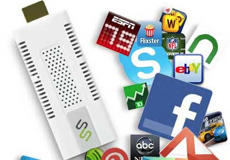Forbes provides an overview of the latest computing and telecommunications predictions for 2013 from tech guru Mark Anderson, as published in his Strategic News Service newsletter.
1) Tablets or “CarryAlongs” will become the dominant segment of computing devices.
2) Intel will fade into obscurity as Qualcomm and ARM take over computing, dominating the production of mobile chips.
3) Most U.S. homes will have Internet-enabled TVs, and other developed nations will follow suit as bandwidth improves.
4) The LTE vs. fiber battle will determine carriers’ business model for the years to come. “Customers choosing broadband LTE in DSL-served regions will be paying more and getting more; but those choosing LTE in fiber-served regions will be paying more for wireless broadband but getting less.”
5) Google will become the next Apple. “Google’s efforts in email, video, smartphones, maps, and driverless cars open up new long-term expansion paths, with more to follow.”
6) The driverless car will work toward ubiquity as countries pass laws to allow it and major brands work on developing new features.
7) e-Books will substantially outpace paperback sales in 2013 and will eventually dominate the market.
8) “Enterprise IT struggles to achieve very modest gains, with executive purchase decisions captured between large cash holdings, increased Asian competition, and their own poorly performing customers.”
9) “‘Hacktivist’ efforts acquire an important and permanent role in political transparency.”
10) Supply chain security will determine global technology purchases. “Recognition that today’s supply chains are virtually all compromised will lead to plant relocations and a new set of business opportunities for onshore component makers.”
